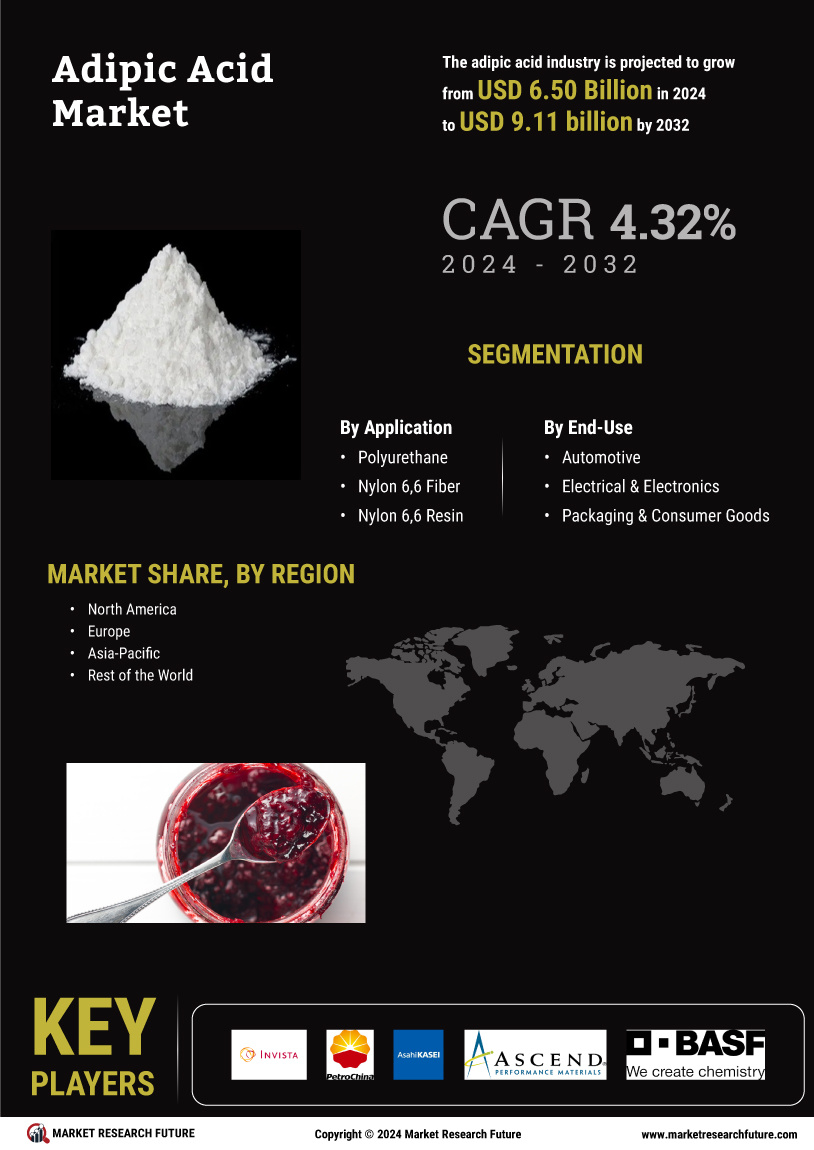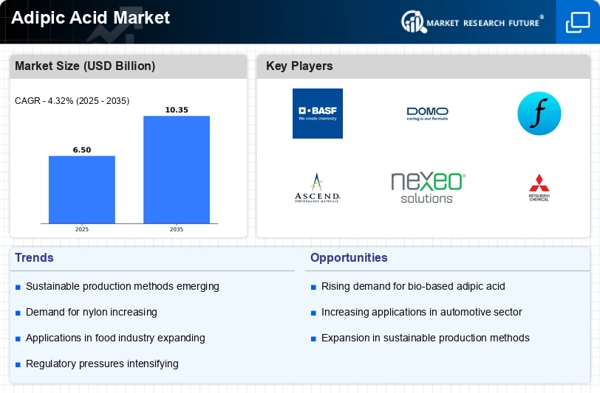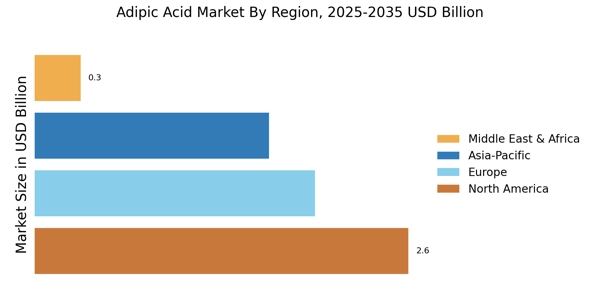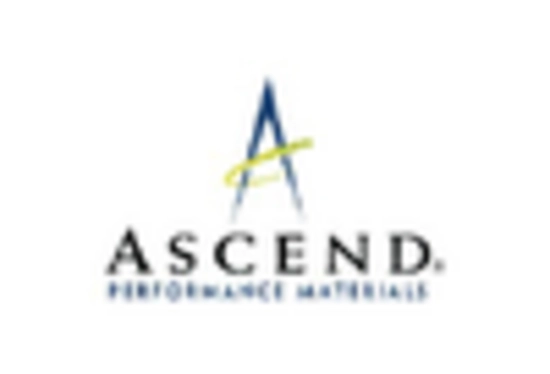Growth in the Automotive Sector
The Adipic Acid Market is significantly influenced by the growth of the automotive sector, which increasingly relies on adipic acid for the production of various components. The shift towards electric vehicles and lightweight materials is propelling the demand for nylon, which is derived from adipic acid. In recent years, the automotive industry has seen a surge in the use of advanced materials to enhance fuel efficiency and reduce emissions. This trend is expected to continue, with projections indicating that the automotive sector will account for a substantial share of adipic acid consumption, potentially exceeding 30% by 2025. Such developments underscore the importance of adipic acid in meeting the evolving needs of the automotive market.
Expansion of the Footwear Industry
The Adipic Acid Market is benefiting from the expansion of the footwear sector, where adipic acid is utilized in the production of polyurethane materials. These materials are favored for their durability and comfort, making them ideal for various types of footwear. The Adipic Acid Market has been on an upward trajectory, with a projected growth rate of around 5% annually. This growth is likely to translate into increased demand for adipic acid, as manufacturers seek to enhance product performance and sustainability. As brands increasingly focus on eco-friendly materials, the role of adipic acid in producing high-quality footwear is expected to become more pronounced, further driving market growth.
Rising Demand for Nylon Production
The Adipic Acid Market is experiencing a notable increase in demand due to its critical role in nylon production, particularly nylon 6,6. This polymer is extensively utilized in textiles, automotive components, and industrial applications. As the automotive sector continues to expand, the need for lightweight and durable materials is driving the consumption of adipic acid. In 2023, the nylon segment accounted for approximately 60% of the total adipic acid consumption, indicating a robust market presence. Furthermore, the trend towards high-performance materials in various industries suggests that this demand may continue to rise, thereby reinforcing the adipic acid market's growth trajectory.
Technological Innovations in Production
The Adipic Acid Market is being propelled by technological innovations that enhance production efficiency and reduce costs. Advances in chemical processes and catalysts are enabling manufacturers to produce adipic acid with greater yield and lower energy consumption. These innovations not only improve profitability but also align with the growing emphasis on sustainability. For instance, the development of greener production methods is expected to attract investment and drive market growth. As companies adopt these technologies, the overall supply chain for adipic acid may become more resilient and responsive to market demands. This technological evolution is likely to play a crucial role in shaping the future of the adipic acid market.
Increasing Focus on Sustainable Practices
The Adipic Acid Market is witnessing a shift towards sustainable practices, as manufacturers and consumers alike prioritize environmentally friendly products. The production of adipic acid from renewable resources is gaining traction, with several companies exploring bio-based alternatives. This transition is not only aimed at reducing carbon footprints but also at meeting regulatory requirements and consumer preferences for sustainable products. As sustainability becomes a key driver in various industries, the demand for bio-based adipic acid is likely to increase, potentially reshaping the market landscape. This focus on sustainability may lead to innovations in production processes, thereby enhancing the overall appeal of adipic acid in the market.


















Leave a Comment